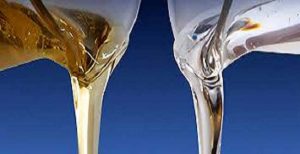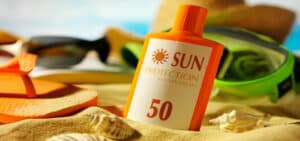Resin is a synthetic or natural compound that is very sticky and hardens under certain conditions. The natural type of this compound is transparent and has high flammability and has a color between yellow to brown. These materials dissolve easily in organic solvents such as ether but are insoluble in water. Resins are used in various industries such as the production of art and decorative products, paint production, plastic production, etc.
Natural resins:
Natural resin is obtained from plants. The best example is pine tree sap, which has a pungent odor. As you know, this material is very sticky, but it hardens over time. Several other plants also produce resins, and these materials have been used by humans for many years. These types of resins are often obtained from tree trunks. By scratching the trunks of trees, a thick liquid comes out, which is natural resin.
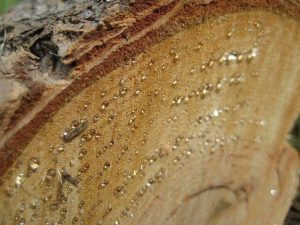
Synthetic resins:
With the advancement of technology, humans realized that this material could be turned into a polymer, and shortly after, synthetic resins were discovered. In most cases, polymers are made with synthetic resins, which are cheaper and easier to filter. These resins are usually obtained by combining different chemicals. Among the substances used in the chemical formula of resins are a variety of oils and natural fatty acids such as:
- Stearic acid
- Glycerin
- Fumaric acid
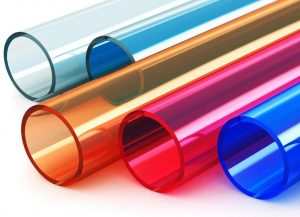
The main applications of synthetic resins include coatings, adhesives, varnishes, and foams, as well as the production of some parts such as composite parts, laminates, artificial stone, etc. One of the advantages of synthetic resins over natural resins is that they are more stable, predictable, and uniform because they are made under controlled conditions. They are made by combining chemicals in the laboratory, and the result is a reaction to form viscous compounds
Types of resins:
- Polyester resin;
- Vinyl ester resin;
- Epoxy resin;
- Acrylic resins;
- Urea-formaldehyde resin;
- Phenol formaldehyde resin;
In this article and in the following, we will explain the most widely used types of resins:
Epoxy resin:
Epoxy is an improved type of resin. In other words, epoxy resin is the same as a liquid epoxy adhesive. All epoxies have two parts: resin and curing agent. The hardening process occurs when the resin and the curing agent react together. This type of resin, also called polyepoxide, is a reactive polymer that contains epoxy groups that have very high levels of heat and chemical resistance and very strong adhesion. Epoxy is one of the best adhesives available for industrial applications. The epoxy resin hardens when cured and has a very high adhesion strength to metals. This resin has many advantages over adhesives and fillers. In addition to filling voids, it can maintain its strength, is waterproof, and can adhere to various surfaces.
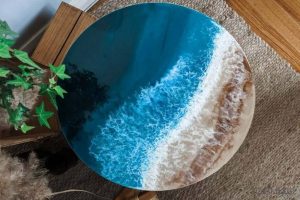
Properties:
- Epoxy resin is an electrical insulator
- It has good resistance to chemicals (acids, bases, fats)
- It has high resistance to water and moisture.
- Low sensitivity to ambient temperature during cooking
- Due to the type of molecular structure, epoxy resins are resistant to thermal and mechanical stresses.
Epoxy Resin Uses:
- Making all kinds of adhesives (all kinds of wallpaper adhesives, wood adhesives, etc.)
- Manufacture of paints and polishes;
- Application of resin in surface protective layers;
- Use it in works of art;
- Production of artificial jewelry;
- Insulation of electrical components;
- Floor covering is one of the most popular applications of epoxy resin for floors of halls, factories, playgrounds, health, and medical equipment production sites;
- As raw materials in paints, adhesives, pastes, glazes, and sealants.
Polyester Resin:
Polyester resins are made from a combination of organic acids and multifactorial alcohols. Organic acids used in this compound include phthalic anhydride and maleic anhydride. Polyester resin, like epoxy resin, is not composed of two components. But compared to epoxy resin, it has lower strength and is mostly used in the marine industry. Polyester resin is usually made of hardener, resin, and cobalt.
Types of Polyester Resins:
These resins are divided into two separate categories according to their properties and applications:
- Isophthalic polyester resin: This type of resin has very high strength, and physical and mechanical resistance and is used more than Orthophthalic and is used when a more specialized and engineered resin is needed.
- Orthophthalic polyester resin: One of the most common types of resin is orthophthalic resin. This type of resin is mostly used in the fields of fiberglass, artificial stone, marine industry, boat making, and porcelain composite.
Properties:
- This type of resin can be combined with different solvents and has very high resistance.
- Very high resistance to weather conditions and destructive environmental factors.
- Compared to other resins, it has a very pungent odor. It smells like styrene.
- If it dries, it can never be returned to liquid.
- Suitable moisturizer for glass fibers.
Polyester resin can also be used as part of the body of home appliances and in combination with other materials.
Polyester Resin Uses:
- Used in the preparation and manufacture of various industrial tools and materials.
- It is used in making and producing works of art, sculpture, and relief paintings.
- Polyester resin is used in the manufacture of electrical components to prevent wear.

Vinyl Ester Resin:
Vinyl ester resin is a type of resin that is the product of the reaction of epoxy resin with unsaturated ethylene acids. This type of resin is very useful due to its properties such as high resistance to corrosion and high chemical resistance, resistance to acidic environments, and solubility.
Vinyl ester resins have good chemical resistance compared to unsaturated polyesters.
Properties:
- High resistance to acidic substances;
- Waterproof insulation;
- High chemical resistance;
- Very high tensile strength;
- Ability to adhere to different surfaces;
- Resistance to erosion and damage.
What is vinyl Ester Resin used for:
- Used in the composite industry to make a variety of composite parts with the highest physical and chemical properties;
- Preparation of protective and surface coatings;
- Adhesive paste and mortar and filler;
- Plastic paint industry;
- Waterproof insulation.

